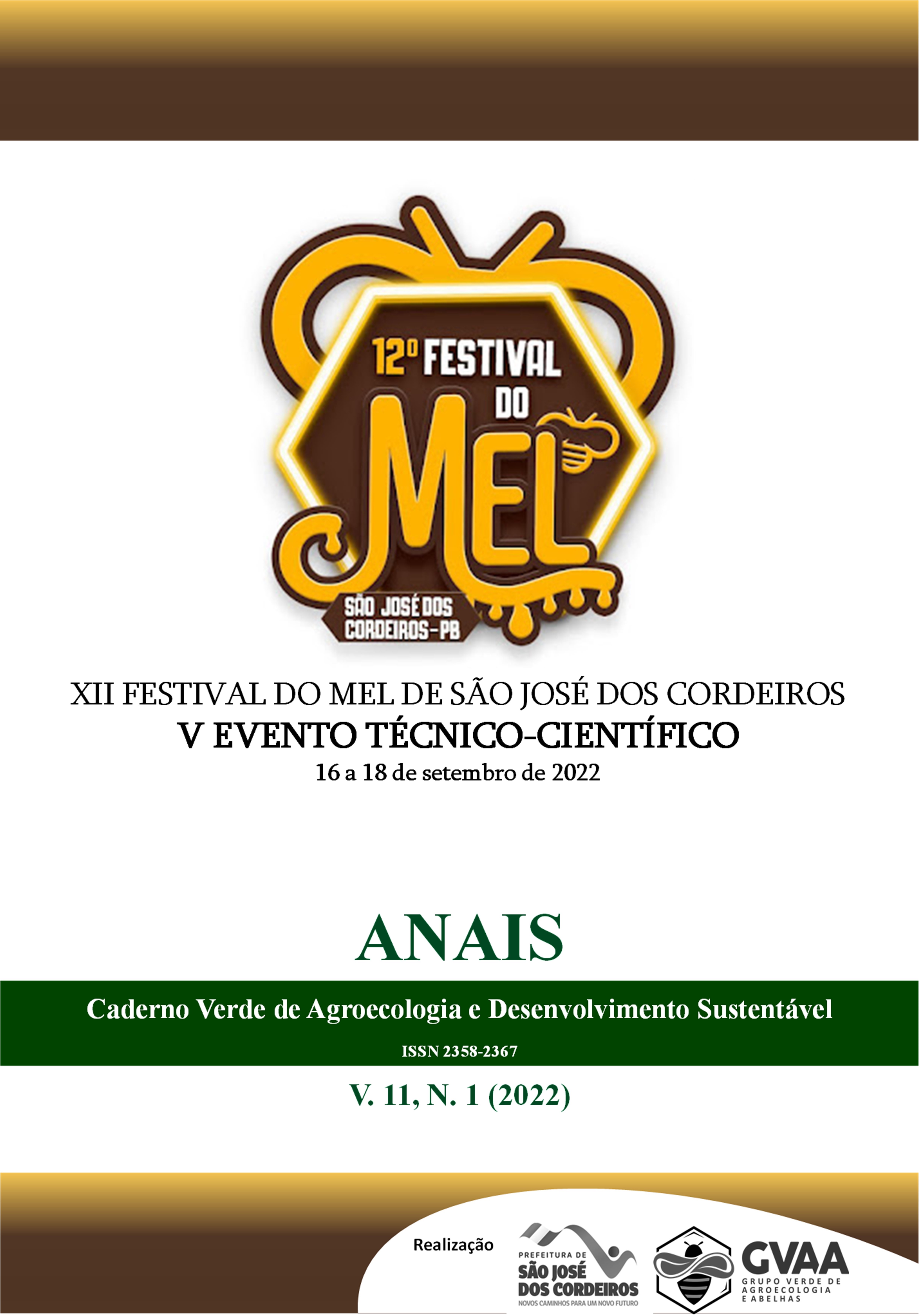Phenotypic characterization of beehives of Apis mellifera in Catolé do Rocha, Paraiba, Brazil
Keywords:
Beekeeping, Diagnosis, ProducersAbstract
Beekeeping has recently evolved around the world, in order to increase productivity levels and standardize its processes. High levels of production can only be achieved by simultaneously improving the genetic makeup of animals and environmental conditions. The present work aimed to phenotypically characterize Apis mellifera. In the city of Catole do Rocha-PB, aiming at participatory genetic improvement (MGP). The productive characterization of honey, wax and propolis was carried out in the hives. Honey production was established by weighing the frames of mature honey harvested from the hives of each colony. Seven hives were used to collect the phenotypic variables from May to September of the years 2019, 2020 and May 2021. The average productivity of honey, wax and propolis per hive was 4642.2, 516.4 and 17, 7 grams respectively, being considered very low for the production of honey and propolis. The apiary of the State University of Paraiba proved to be below the desired average for the region, which suggests that new methods should be adopted for its management. The correlation analysis indicated a positive correlation between the variables, showing, demonstrating that they are sufficiently interconnected. It is concluded that it is possible to select hives with good productivity of honey, wax and propolis, enabling their management in an appropriate way. Although beekeeping stands out in the region of Catole do Rocha, it is necessary to overcome difficulties, such as the lack of studies to improve the use of hives by producers, programs that can develop beekeeping activities and qualified technical assistance. Beekeeping is of great importance in the region, serving as an alternative for economic, social and environmental aspects, providing sustainable practices to natural resources, generating food, work and income.
Downloads
Published
How to Cite
Issue
Section
License
Termo de cessão de direitos autorias
Esta é uma revista de acesso livre, em que, utiliza o termo de cessão seguindo a lei nº 9.610/1998, que altera, atualiza e consolida a legislação sobre direitos autorais no Brasil.
O(s) autor(es) doravante designado(s) CEDENTE, por meio desta, publica a OBRA no Caderno Verde de Agroecologia e Desenvolvimento Sustentável, representada pelo Grupo Verde de Agroecologia e Abelhas (GVAA), estabelecida na Rua Vicente Alves da Silva, 101, Bairro Petrópolis, Cidade de Pombal, Paraíba, Brasil. Caixa Postal 54 CEP 58840-000 doravante designada CESSIONÁRIA, nas condições descritas a seguir:
O CEDENTE declara que é (são) autor(es) e titular(es) da propriedade dos direitos autorais da OBRA submetida.
O CEDENTE declara que a OBRA não infringe direitos autorais e/ou outros direitos de propriedade de terceiros, que a divulgação de imagens (caso as mesmas existam) foi autorizada e que assume integral responsabilidade moral e/ou patrimonial, pelo seu conteúdo, perante terceiros.
O CEDENTE mantêm os direitos autorais e concedem à revista o direito de divulgação da OBRA, com o trabalho simultaneamente licenciado sob a Licença Creative Commons do tipo atribuição CC-BY.
O CEDENTE têm autorização para distribuição não-exclusiva da versão do trabalho publicada nesta revista.
O CEDENTE têm permissão e são estimulados a publicar e distribuir seu trabalho online (ex.: em repositórios institucionais ou na sua página pessoal) a qualquer ponto antes ou durante o processo editorial, já que isso pode gerar alterações produtivas, bem como aumentar o impacto e a citação do trabalho publicado.








